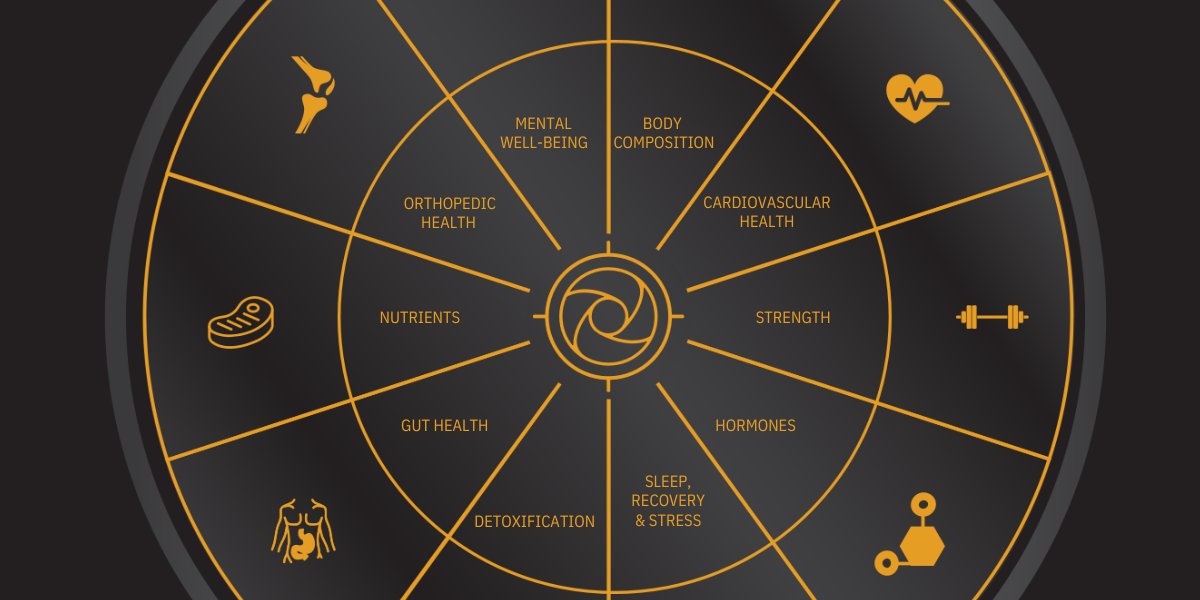Understanding the Wheel of Health: Stark's Comprehensive Approach to Well-Being
At Stark, we believe that true health encompasses far more than just physical fitness. It's about achieving a harmonious balance across all aspects...
.png?width=70&height=70&name=Stark_LogoMark%20(1).png)

In the labyrinth of our current healthcare system, individuals often find themselves entangled in a web of complexity. This system, more often than not, is overrun, lacking in quality and accessibility, leaving many under-cared for while grappling with exorbitant costs. As the status quo perpetuates, it becomes evident that the existing paradigm is better described as "Sickcare." While insurance companies force many into viewing this sub-par system as the norm, more and more people are searching for other options that allow them to better manage their health before issues arise. Read on if you are ready to explore the contrast between what healthcare looks like right now for a majority of Americans compared to what it could be.
A shortage of doctors results in an overwhelming number of patients, making it nearly impossible to provide highly personalized care plans. The system operates in a way that allows pharmaceuticals to drive revenue up, while healthy patients, paradoxically, drive revenue down, so no matter how well-intentioned they are, general practitioners trying to provide the best care possible are severely limited. Additionally, there is little to no lifestyle health training for doctors, leaving them ill-equipped to address crucial factors like nutrition and strength training, as medical schools focus the majority of education on how to reactively treat illness, not prevent it. This divided system requires individuals to become their own health experts, communicating with various professionals independently. It's not hyperbole to suggest that what is commonly referred to as healthcare should more accurately be termed "sickcare," as resources are predominantly allocated only when individuals fall ill.
Imagine a scenario where comprehensive testing is based on individual needs, rather than generalized lists pre-determined by insurance companies. At the heart of a better healthcare system is a well-informed doctor who takes the time to understand each patient as an individual- their family and personal health history, lifestyle habits, and any symptoms- no matter how small. In this true healthcare model, patients can freely ask questions, and receive well-researched yet personalized responses, or doctors may offer to investigate further before following up. Moreover, the professionals in this system seamlessly communicate with each other, eliminating the need for patients to act as their own medical liaisons. The overarching goal here is not merely to treat sickness but to help individuals proactively improve or maintain their health.
The existing gap between the ideal healthcare system and the current sickcare model is vast but certainly not hopeless. To bridge this gap, a paradigm shift is necessary—one that prioritizes preventive health, values patient-centered care, and invests in the well-being of individuals rather than focusing solely on the bottom line. Achieving this transformation requires a commitment to reshaping priorities within the healthcare industry, placing an emphasis on fostering health rather than merely treating sickness.
This concept is exactly why Stark has worked so hard to not only turn this concept into a reality, but also to grow to a point where one day this is the standard of healthcare everyone can come to expect, instead of settling for the current status quo. It's time to move from a sickcare-centric system to one that genuinely embodies the principles of healthcare, ensuring a healthier and more informed future for all.

At Stark, we believe that true health encompasses far more than just physical fitness. It's about achieving a harmonious balance across all aspects...

Any goal you set should be accompanied by a detailed plan on how to accomplish it. However, in order to create a plan, you have to know your...